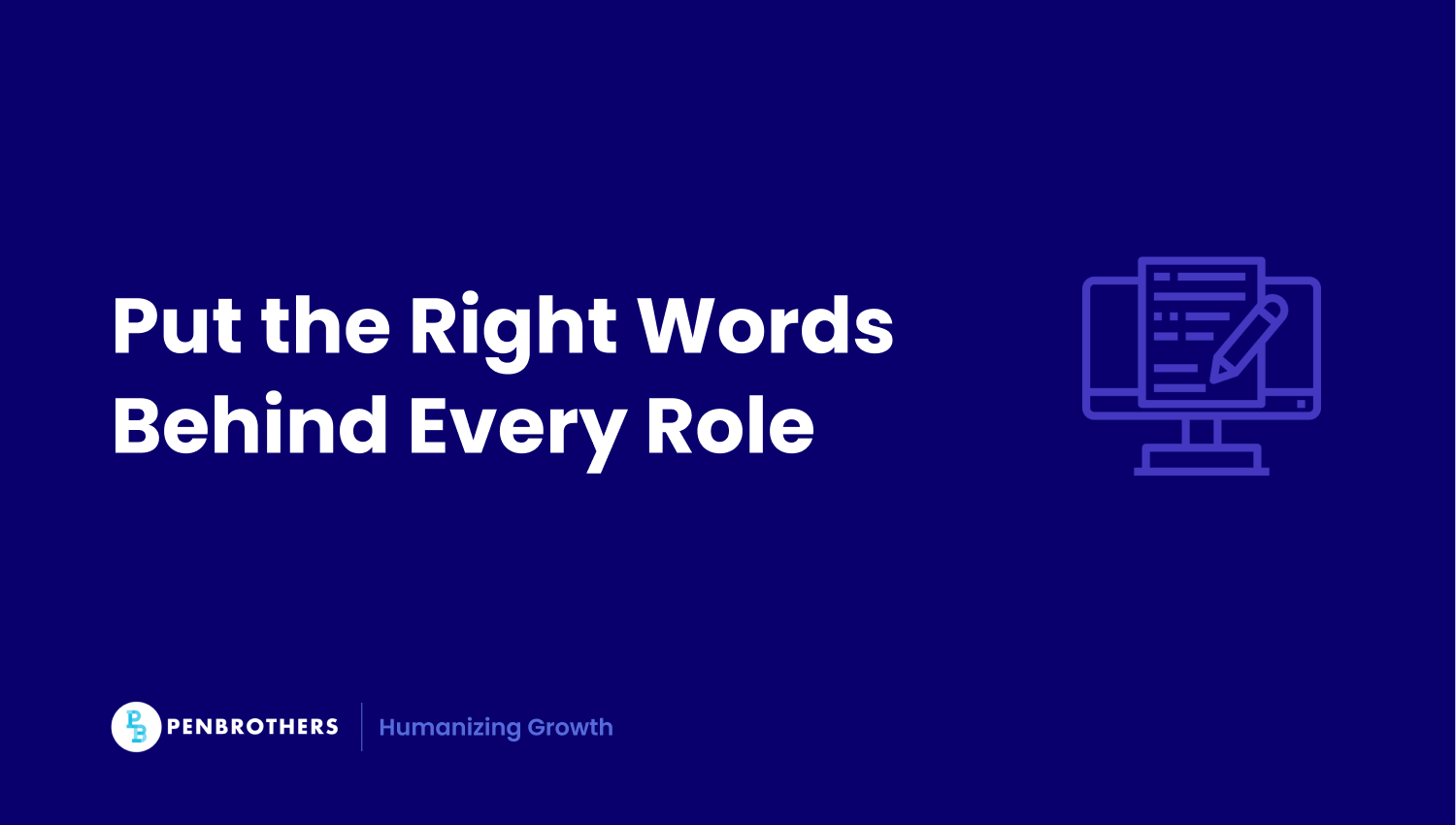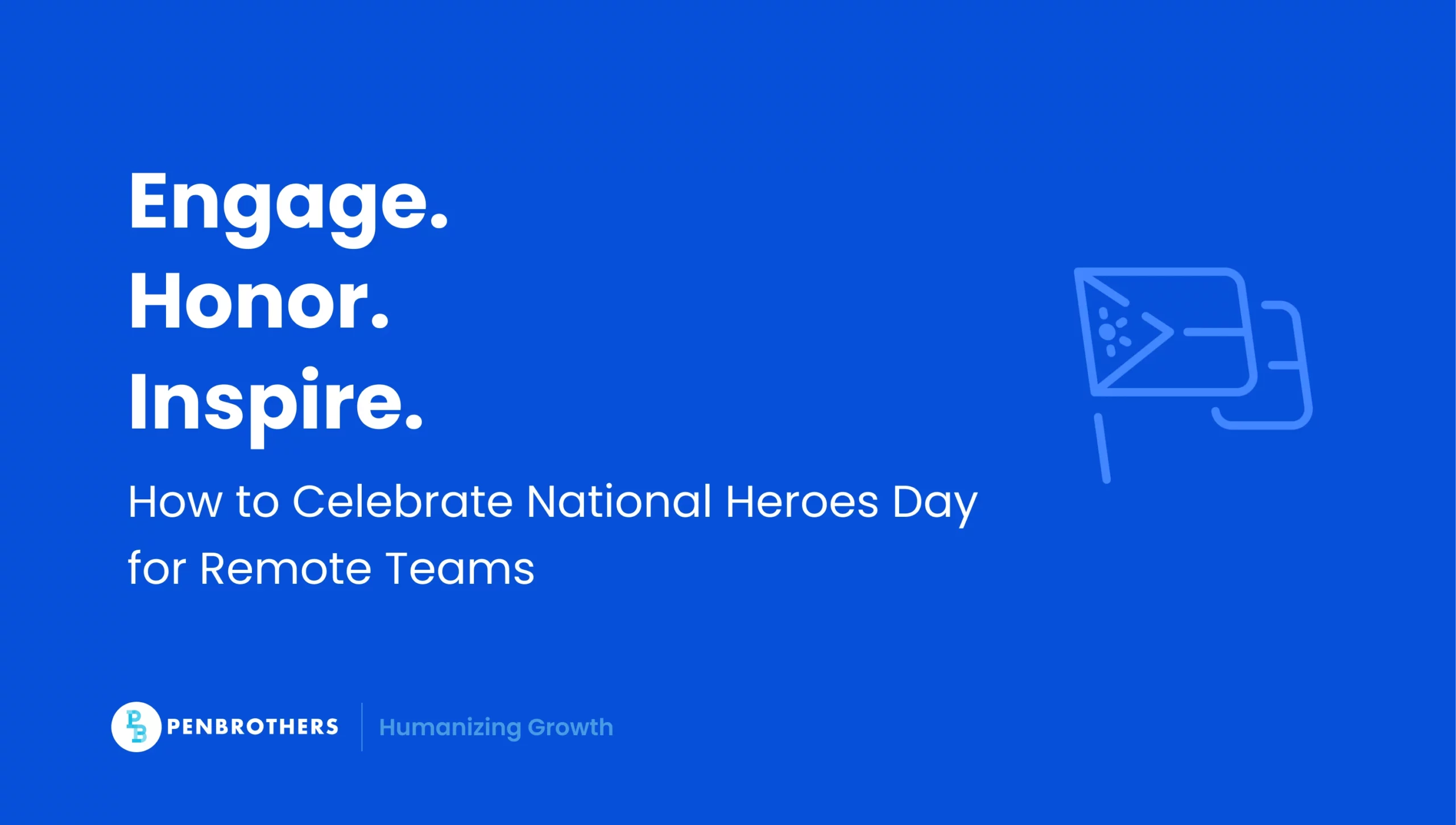What's Inside?
How to Write a Role Description?

Your team is smart. Motivated. Talented. But somehow, projects stall, responsibilities blur, and you constantly find yourself jumping in to reassign work. The real issue? Not poor performance. It’s the absence of a clear role description.
A role description is more than a job post. It’s a strategic asset. It sets expectations, supports performance, drives accountability, and defines how each role contributes to your company’s growth. Whether you’re scaling a startup or streamlining operations in an SME, this guide will help you craft role descriptions that reduce ambiguity and boost efficiency.
What Is a Role Description?
A role description is a structured document that clearly defines what a job entails. It outlines the responsibilities, expectations, required skills, reporting lines, and performance metrics tied to a specific role. Unlike a job ad, which markets the role, a role description aligns internal teams, enhances accountability, and serves as the foundation for hiring, onboarding, performance reviews, and career development. Want to see how role clarity connects to company culture? Explore our core values at Penbrothers.
According to Gallup’s 2023 global report, only 51% of employees strongly agree that they know what’s expected of them at work, highlighting the performance and retention risks associated with vague or outdated role descriptions
Benefits of Clear Role Descriptions
Writing clear role descriptions isn’t just a paperwork exercise, it’s a strategic move that impacts team performance, employee retention, and business scalability. Below are the key benefits, backed by industry research:
1. Eliminates Ambiguity and Increases Accountability
When employees know what’s expected, they focus better, own their tasks, and deliver results without second-guessing.
- Clear roles prevent overlapping duties.
- Teams waste less time on miscommunication.
- Responsibility gaps and “not-my-job” behavior disappear.
2. Improves Job Satisfaction and Reduces Turnover
Lack of clarity is stressful. When people are unsure of their role, they feel unvalued and disengaged. The 2023 Work Institute Retention Report found that “lack of career development and unclear expectations” were among the top five reasons employees voluntarily left their jobs.
- Defined roles reduce daily anxiety and increase role confidence.
- Employees can visualize their impact, which supports emotional commitment.
- Clear career paths begin with clear job scopes.
3. Enhances Onboarding and Ramp-Up Time
Without a solid role description, new hires struggle to navigate their responsibilities. Well-written role definitions act as a built-in onboarding guide, reducing learning curves and dependency on micromanagement.
- A SHRM report emphasizes that “role clarity is critical during the first 90 days,” with confusion contributing to early attrition among new hires (SHRM, 2022).
- Defined role cards reduce redundant training.
- Onboarding becomes a process, not an improvisation.
4. Promotes Team Collaboration and Reduces Conflict
In teams, unclear responsibilities often create power struggles or task duplication.
- Clarity improves alignment across departments.
- Teams collaborate rather than compete.
- Fewer escalations mean faster project delivery.
5. Drives Growth and Enables Performance Reviews
Role descriptions provide the foundation for objective performance metrics. You can’t evaluate what you never defined. Well-scoped roles also reveal training needs and upskilling opportunities.
- LinkedIn’s 2023 Workplace Learning Report states that “companies with clear career pathways and role progression retain employees 2x longer”
- Managers can set fair KPIs tied to real responsibilities.
- Employees can self-assess and advocate for development.
Where Role Descriptions Are Used
- Hiring & recruitment – Write accurate job ads and assess candidate fit.
- Onboarding & training – Guide new hires with clarity from day one.
- Performance management – Align evaluations with clearly defined KPIs.
- Career development – Show pathways for progression and upskilling.
- Internal mobility – Match talent to the right opportunities.
According to LinkedIn’s 2024 Global Talent Trends report, internal mobility improves retention by 75% over three years, reinforcing the need for clear and structured role pathways.
Step-by-Step: How to Write a Role Description
Clear role descriptions aren’t just for recruitment, they’re blueprints for accountability, performance, and long-term growth. Follow these eight strategic steps to write a role description that aligns with your organization’s goals and equips your team to deliver.
Step 1: Collaborate with Stakeholders
Start with the people who know the role best. Bring in team leads, hiring managers, and especially current or previous role holders. They’ll help you distinguish between what the job is supposed to be versus what it actually entails day-to-day. Gartner emphasizes the importance of collaboration between HR and business leaders in enhancing hiring outcomes. For instance, their research on HR technology strategies highlights how cross-functional collaboration can lead to more effective talent acquisition processes.
- Host a short working session to align on scope and expectations. Working with an experienced partner helps accelerate this alignment—especially when offshoring. Here’s how to choose the right outsourced staffing partner.
- Ask: What does this role solve for? What does great performance look like?
Step 2: Write a Clear Job Title and Role Summary
Ditch the creative job titles like “Rockstar” or “Ninja.” They confuse candidates and underperform in search rankings. Instead, use industry-standard titles and write a brief summary (3–5 sentences) that explains:
- The role’s purpose
- Its impact on the team or company
- Why the position exists now
This intro helps both internal and external audiences understand the role at a glance.
Step 3: List Core Responsibilities and Tasks
Bullet out 6–10 responsibilities in order of strategic importance.
Avoid vague phrases like “assist with projects.” Be clear about ownership, expected deliverables and tools used. A strong list should answer:
- What does this person own day-to-day?
- What tools, systems, or software are used?
- Who do they collaborate with cross-functionally?
Tip: Responsibilities ≠ tasks. Focus on outcomes and ownership, not just activities. Make sure you’re factoring in behavioral competencies too. Here’s why soft skills are essential in remote team setups.
Step 4: Define Must-Have vs. Nice-to-Have Skills
Be realistic. Overloading a role with an ideal candidate profile can shrink your talent pool.
Clearly separate non-negotiables from bonuses. This improves candidate fit and avoids discouraging great talent.
Must-Haves Might Include:
- Minimum years of relevant experience
- Required certifications (e.g., CPA, PMP)
- Software proficiency (e.g., Salesforce, Figma)
Nice-to-Haves Could Include:
- Industry-specific experience
- Multilingual communication
- Experience in startups or global teams
According to SHRM, unclear or inflated role requirements contribute to increased time-to-fill and offer rejection rates (SHRM, 2023).
Step 5: Describe What Success Looks Like
Don’t just say “we want someone results-driven.”
Spell out what success in the role actually means at 30, 60, 90 days and beyond.
- What should they deliver in the first month?
- How will success be measured (e.g., KPIs, project outcomes)?
- What soft skills or behaviors signal they’re thriving?
This sets clear expectations from day one and makes performance reviews more objective.
Step 6: Clarify Reporting Lines and Stakeholders
Map out who this role reports to and who they work with regularly.
This supports cross-functional clarity and helps the candidate envision their ecosystem within the org.
- Direct manager or team lead
- Peer roles they’ll interface with
- Any dotted-line or secondary collaboration paths
Bonus: Include upward mobility if it applies, so candidates can picture potential career progression.
Step 7: Add Context (Optional but Powerful)
While not always public-facing, adding role context internally or for job ads improves transparency.
Consider including:
- Salary range or grade band
- Work location (on-site, hybrid, remote)
- Perks and benefits (healthcare, training allowance, leave policy)
According to LinkedIn’s 2023 Future of Recruiting report, compensation ranks as the #1 priority for candidates globally, and the importance of flexible work as an employee value proposition (EVP) has grown by 10% among all job seekers and 14% among Gen Z job seekers from 2021 to 2023. This highlights the increasing demand for transparency in compensation and flexible work arrangements among job seekers.
Step 8: Share and Centralize Internally
A beautifully written role description is useless if it’s buried in someone’s inbox.
Once finalized:
- Store it in a shared internal folder or HRIS
- Notify relevant teams (HR, hiring managers, payroll, team leads)
- Keep it up to date, review quarterly or when the role evolves
Misalignment often stems from visibility gaps, not bad intentions.
Pro Tips for Startups and Scaling Teams
In startups and high-growth companies, agility is everything. But speed without clarity leads to chaos. That’s why smart teams treat role descriptions as dynamic, not static. Here’s how to get it right, even with limited time or HR resources.
1. Revisit Role Descriptions Frequently
Startups move fast, your role definitions should keep up. What a Marketing Associate does in a 5-person team will be very different six months later in a 30-person team.
Tip: Add a calendar reminder to review key role descriptions every quarter or after major team shifts (like funding rounds or leadership changes).
Example: After launching a new product line, the responsibilities of a Customer Success Lead might shift from onboarding to upselling, make sure the role description reflects that evolution.
According to Gartner, organizations that align roles with real-time performance indicators experience a 24% boost in productivity.
2. Start Simple, Then Scale
You don’t need to launch with a full-blown competency framework. Just focus on what matters most: What is this person responsible for and how will we know they’re successful?
Tip: Begin with a single-page role summary using this format:
- Role purpose
- Top 5 responsibilities
- Must-have skills
- Success metrics
Example: For your first hire in Product, avoid vague titles like “Product Wizard.” Instead:
Title: Product Manager
Goal: Launch and improve the first version of our mobile app
Success at 90 days: MVP live, 50 beta users onboarded, feedback loop established
Once your org grows, then you can layer in career progression and skill matrices.
3. Document Even Informal Roles
In early-stage companies, everyone wears multiple hats. But undocumented responsibilities lead to misalignment and burnout, especially in offshore or remote setups.
Tip: For every function, even if part-time or project-based, create a basic role description and store it somewhere accessible (e.g., Notion, Google Drive, or your HRIS).
Example: If your executive assistant is also handling marketing emails, write it down. That way, when you hire your first marketing coordinator, you know what to delegate and to whom.
In offshore setups (like those supported by Penbrothers), asynchronous clarity is key. A shared role doc ensures everyone, across time zones, knows who owns what.
4. Make It a Living Document
Your team is evolving. Your role descriptions should too. Treat them like a product: iterate based on performance, needs, and feedback.
Tip: Add a small section at the bottom of each role description:
“Last reviewed on [Date] by [Manager]”
This creates accountability and a feedback loop between HR, team leads, and offshore partners.
Real-World Role Description Examples
Clear role descriptions are a hallmark of high-performing teams. Here’s how leading companies structure their roles to drive alignment, accountability, and growth.
Liefery: Precision at Entry Level
Liefery’s Level 1 Product Manager role sets a gold standard for clarity. The description outlines core duties, required skills, and success metrics—removing ambiguity for both the employee and the manager.
Why it works: Every stakeholder knows exactly what the role is accountable for from day one.
Kickstarter: The Role Ladder Framework
Kickstarter uses a transparent ladder system to map out role progression across teams. From junior positions to senior leadership, each level details expected responsibilities, competencies, and contributions.
Why it works: It supports internal mobility by giving employees a clear path for growth and promotion.
Wise: Track-Based Role Leveling
Wise implements a track-specific leveling framework, particularly in analytics and product teams. Each level comes with defined KPIs, leadership responsibilities, and progression criteria.
Why it works: Roles are tightly aligned to business outcomes, making promotions and evaluations objective.
Final Thoughts
The fastest way to fix misalignment isn’t hiring more people, it’s defining what existing people are supposed to do. Clear role descriptions are foundational to that. They empower teams, unlock accountability, and support sustainable growth.
Need help developing role descriptions or scaling your offshore team? Let Penbrothers help. From recruitment to onboarding and team management, we’ll ensure every hire knows exactly where they fit and how to thrive.
*This article was crafted with the support of AI technology and refined by a human editor.





